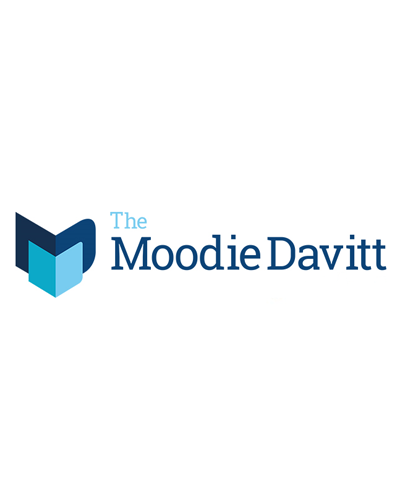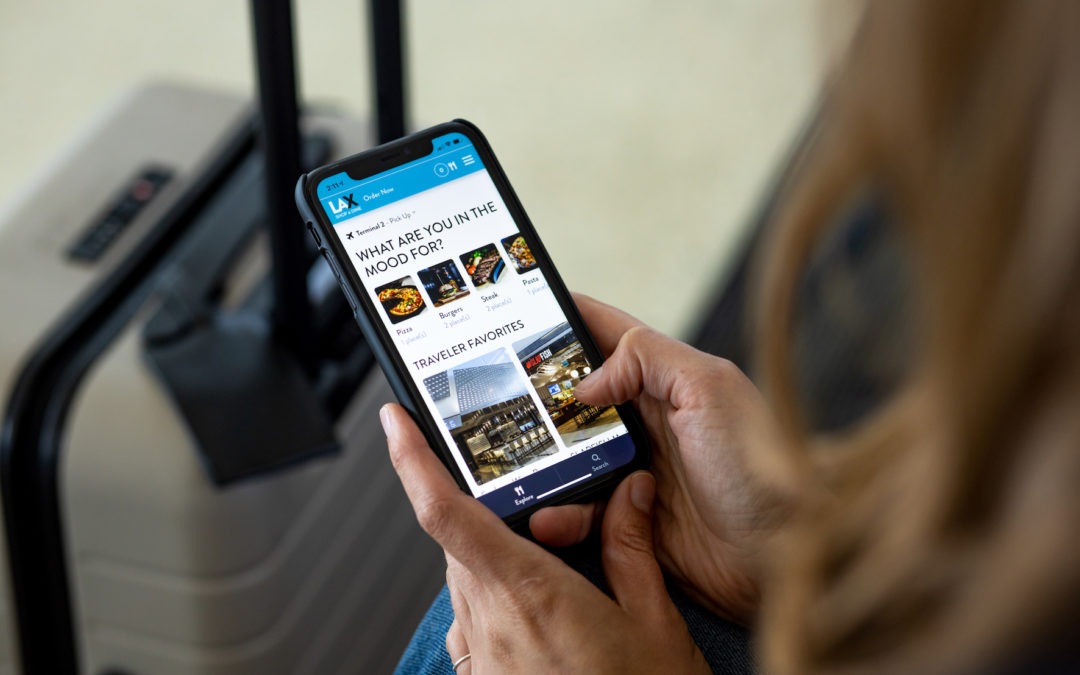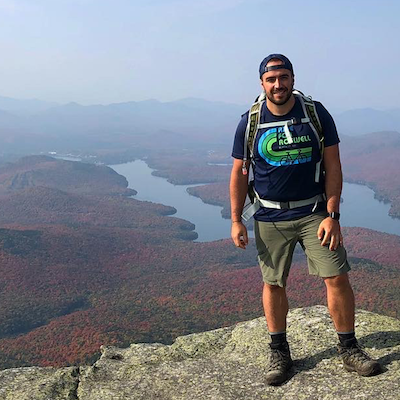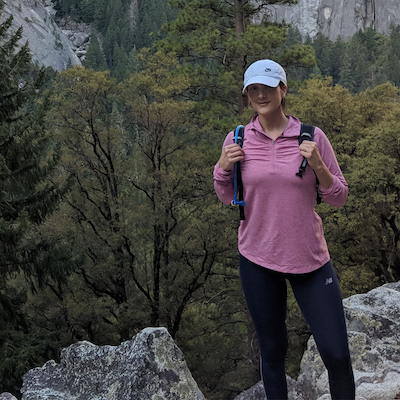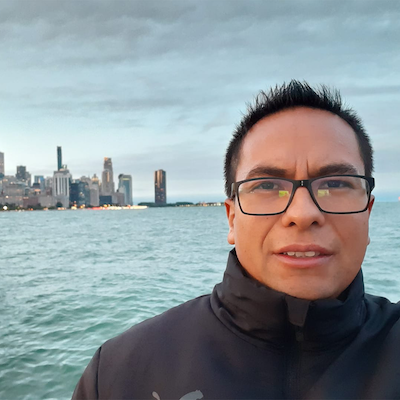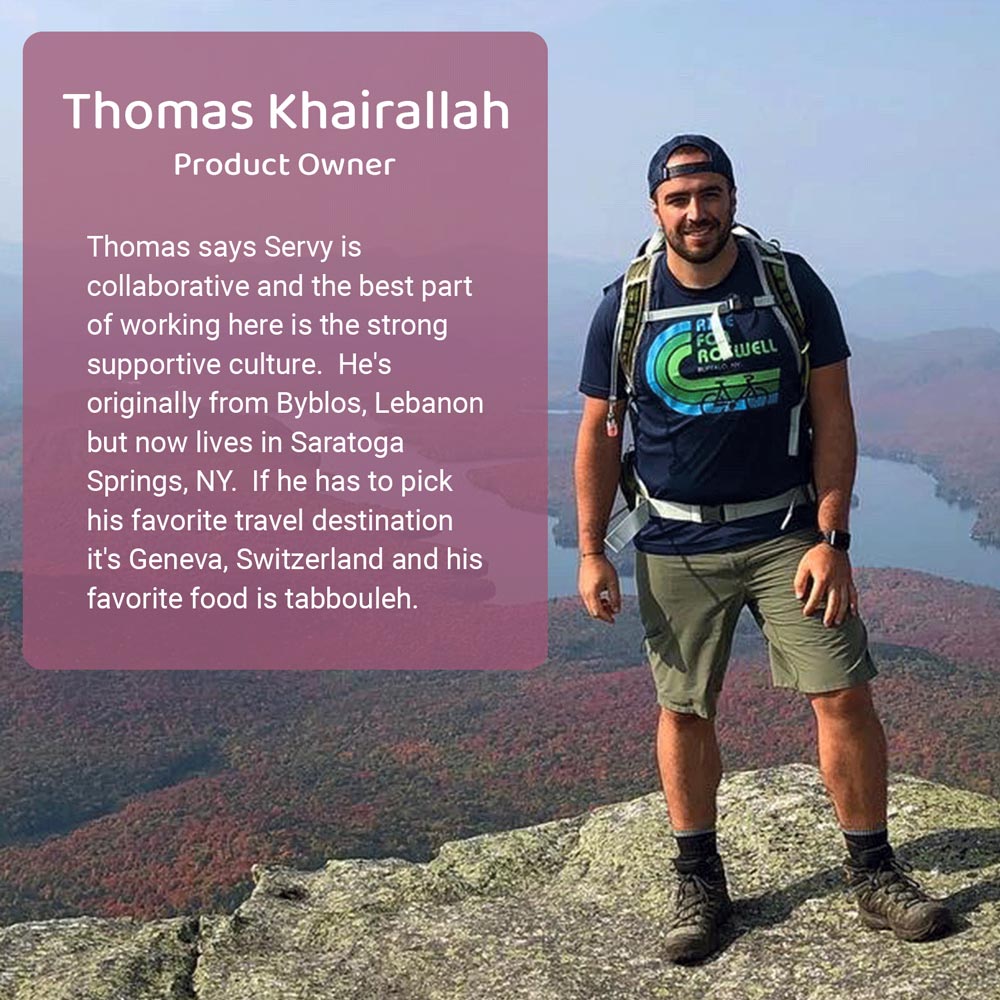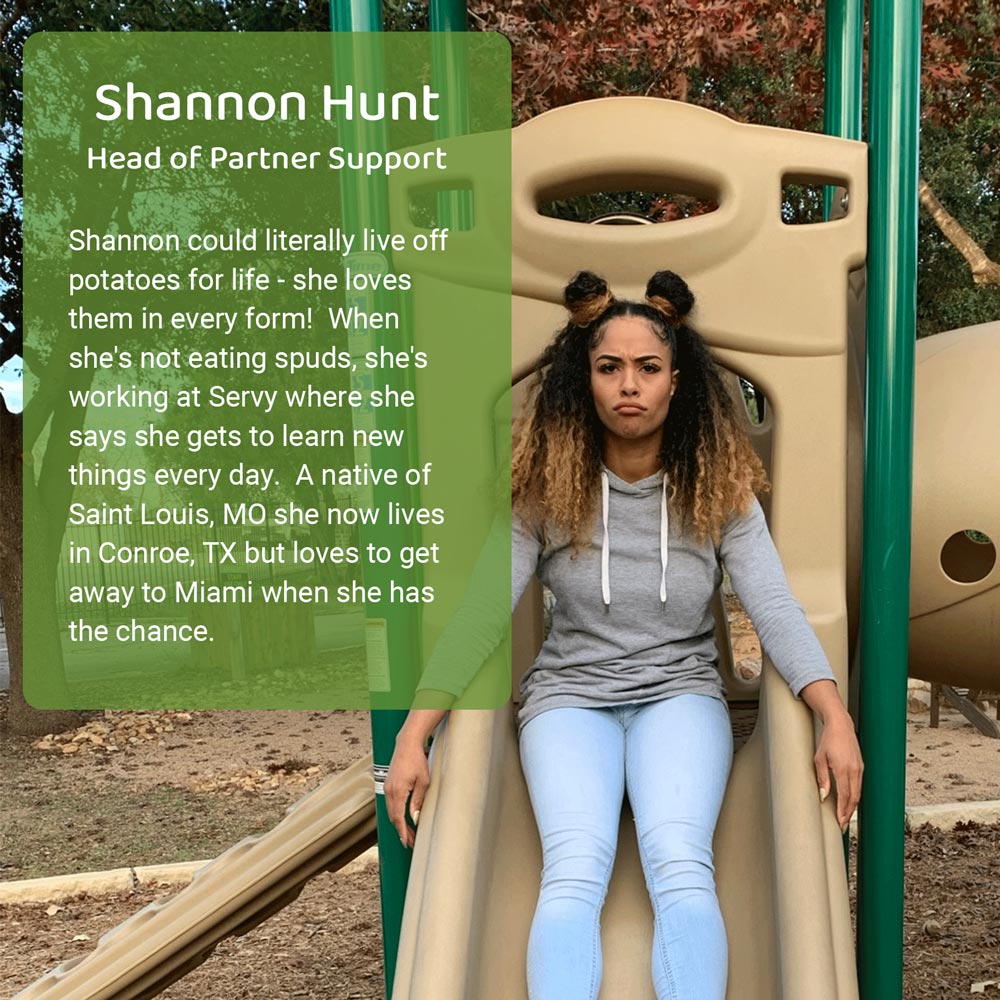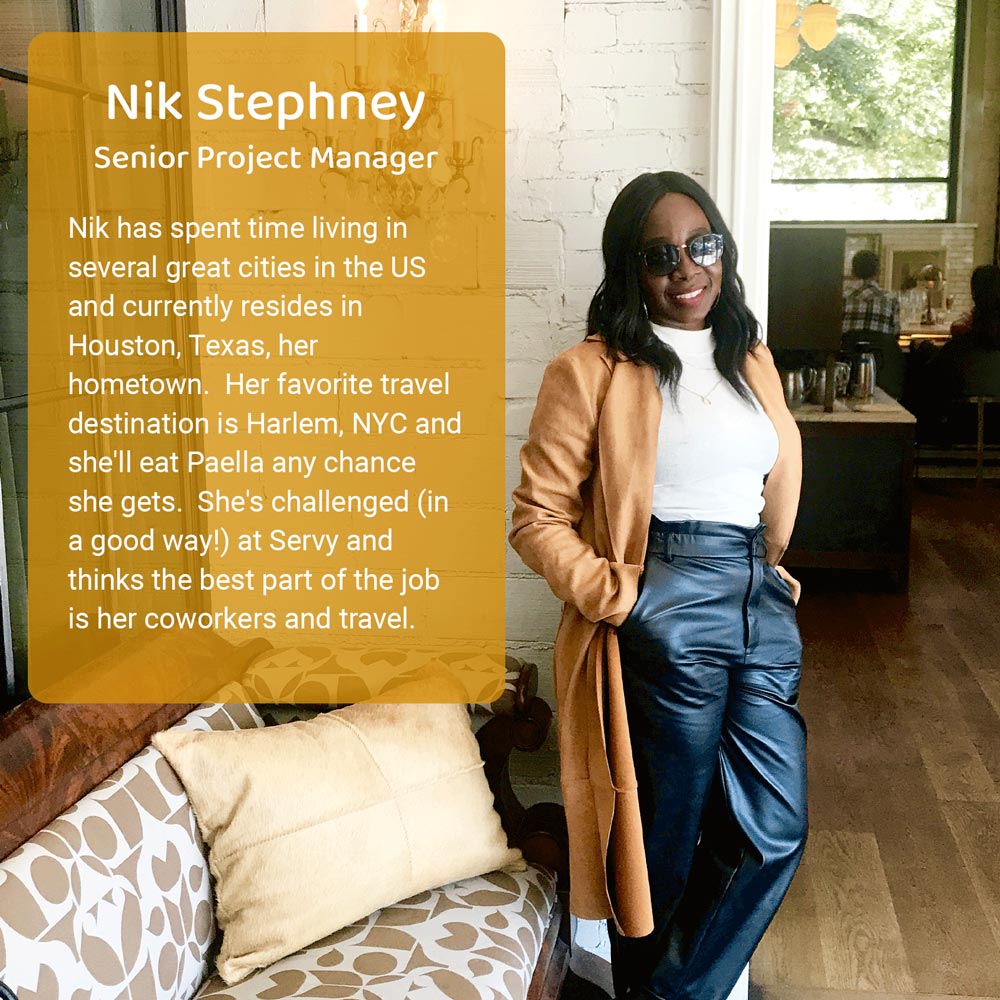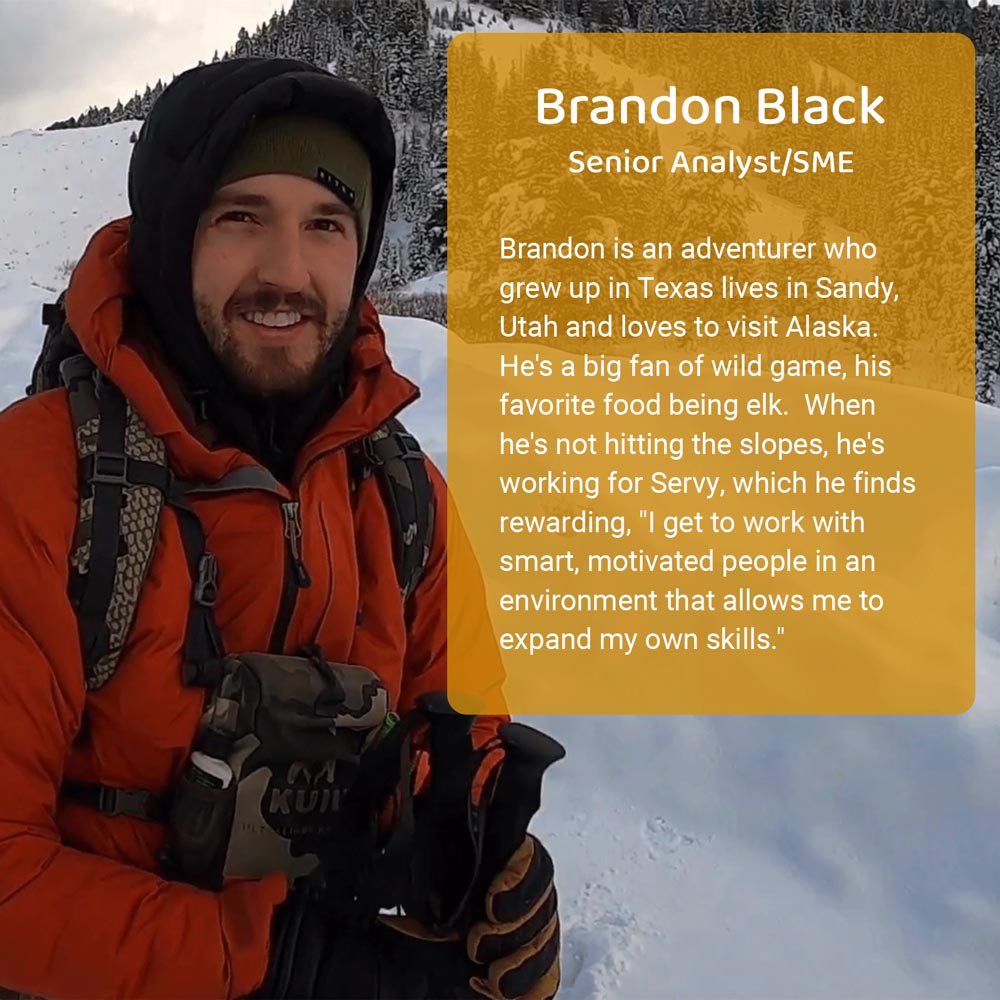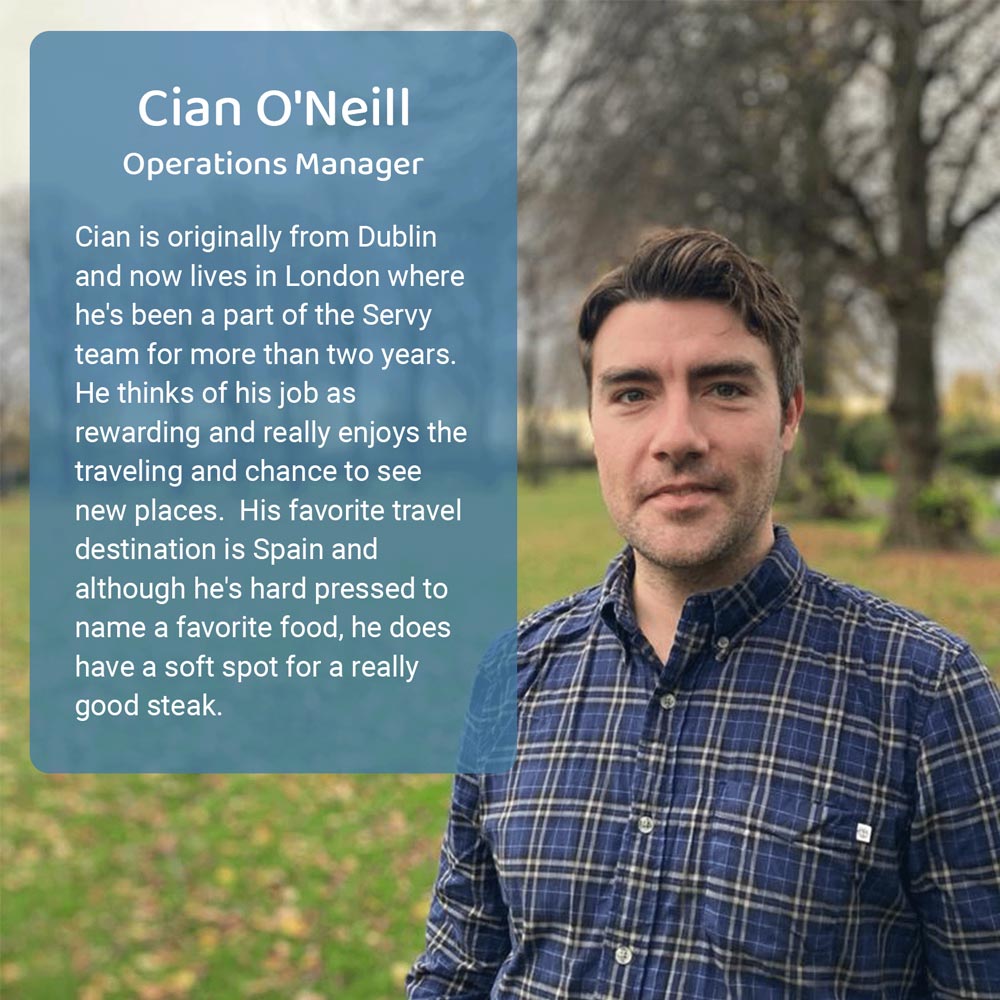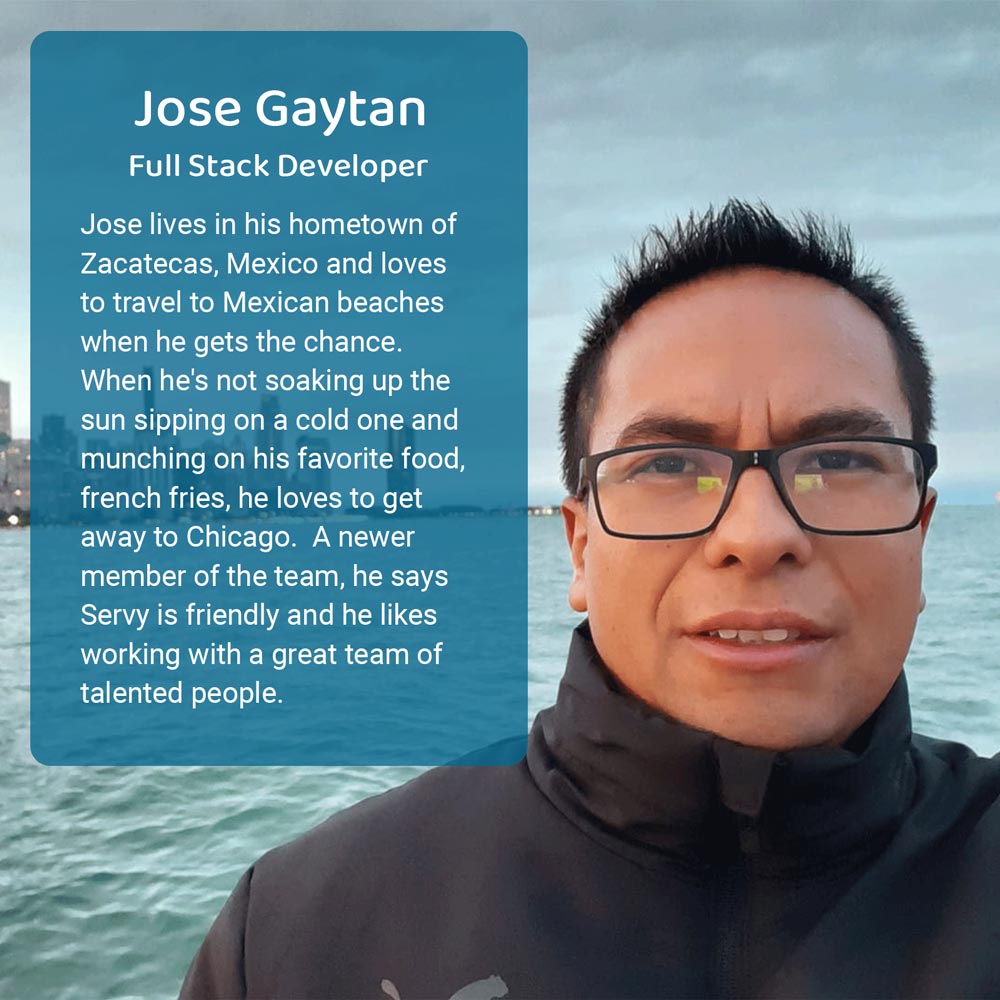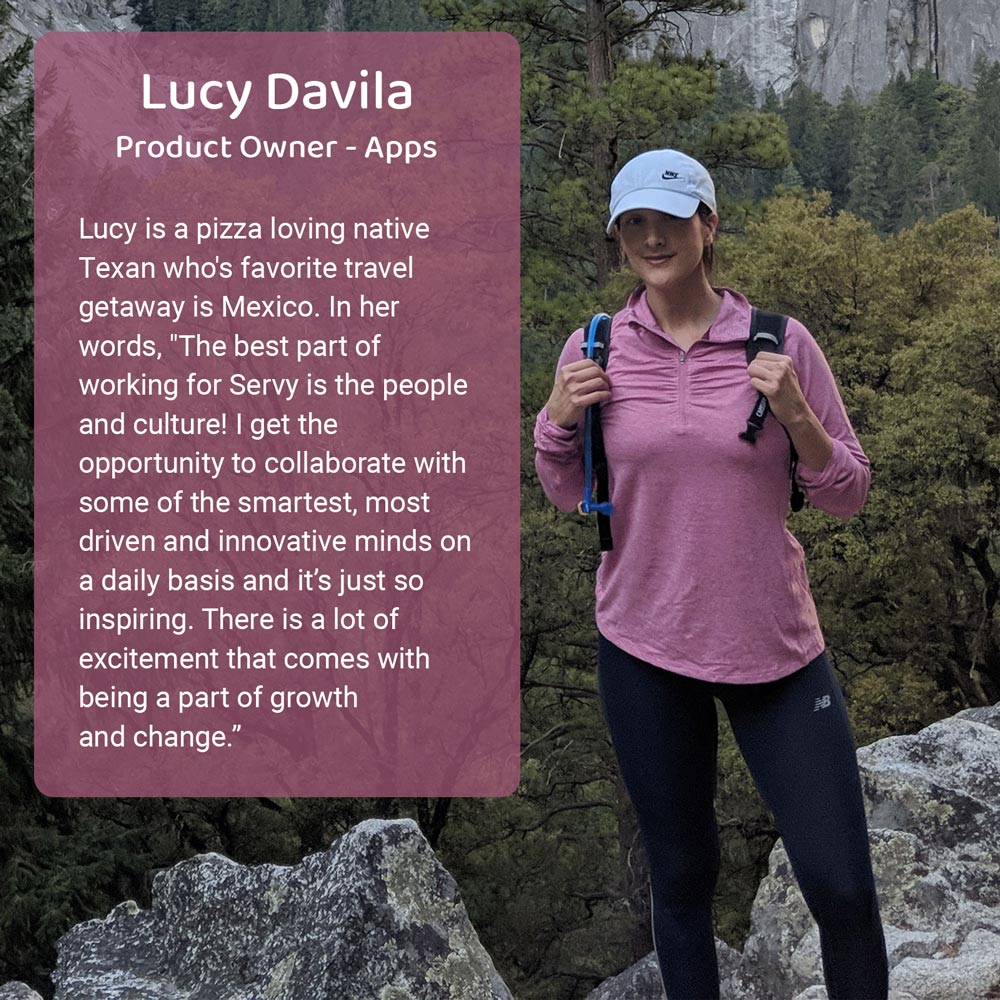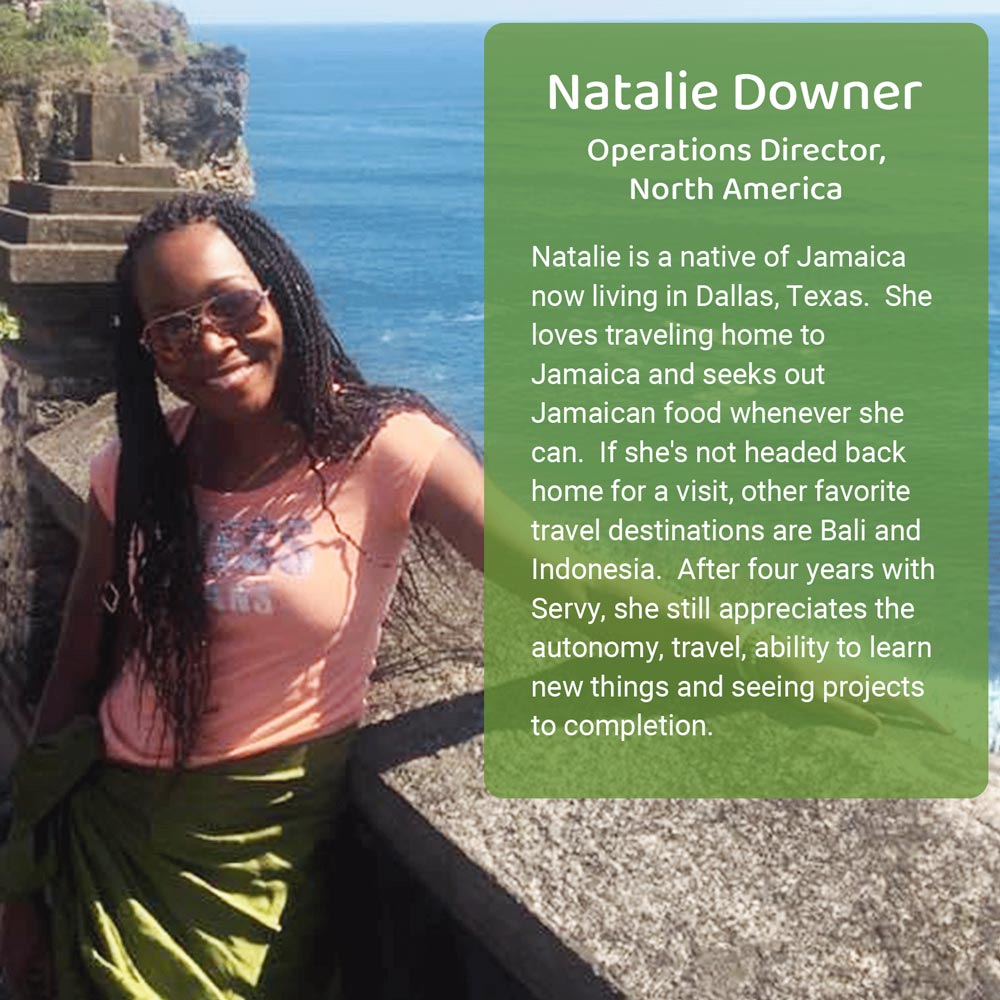US/INTERNATIONAL. Leading self-service hospitality platform Servy and Unibail‐Rodamco‐Westfield (URW), which manages airport commercial programs and other consumer destinations across Europe and the US, have announced a strategic alliance. URW has taken a significant minority stake (undisclosed) in Servy, and sits on the board along with existing shareholders, including traveler experiences and loyalty company Collinson and Servy management.
The partners said they aim to “capitalize on the accelerating digital retail transformation and greater consumer expectations for safe, seamless and elevated customer experiences”.
The alliance will focus heavily on the expansion of Servy’s Grab Airport Marketplace. Since first launching in 2015 as a mobile ordering app, it has become a leading omnichannel airport ecommerce platform present in more than 80 airports. The platform digitalizes the connection between customer and concessionaire at multiple touchpoints – from mobile to kiosk to web.
In 2020, URW partnered with Servy to develop, operate, and scale contactless digital order and fulfilment experiences at selected airports within its portfolio – allowing customers to transact with airport restaurants and retailers from their mobile device without downloading an app. LAX Order Now, a partnership with Los Angeles World Airports (LAWA) which uses the platform, has become one of the most commercially successful programs in Servy’s global portfolio (see below).
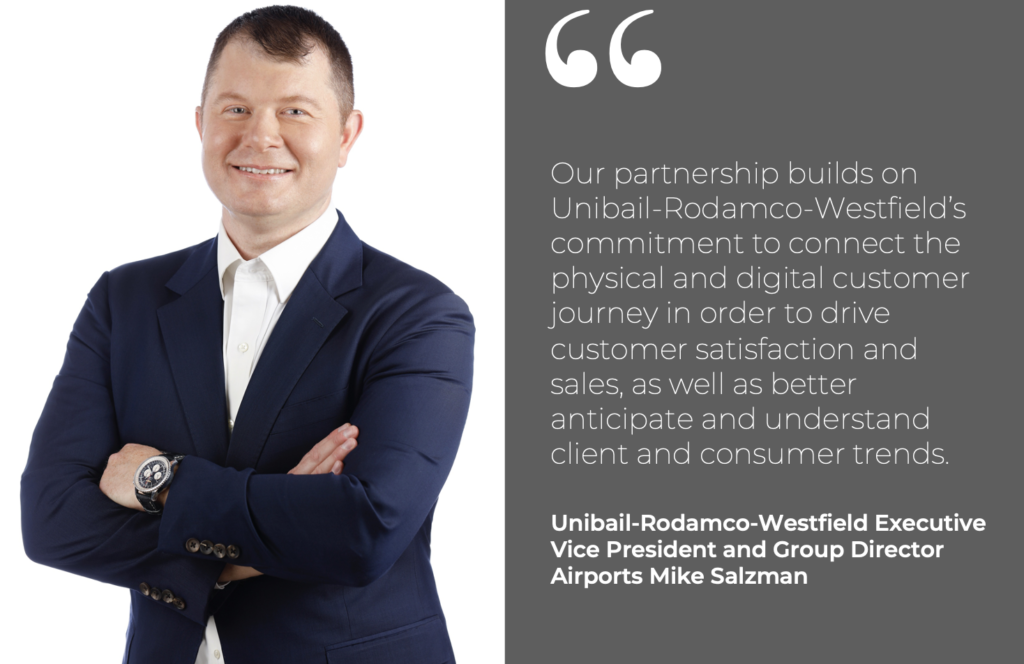
Servy will focus on the expansion of best practices learned in the Los Angeles, Miami and Chicago T5 rollouts across a global network of airport partners, while also leveraging URW’s global footprint, expertise and relationships with leading brands and retailers. The companies will also explore the application of the technology and digital hospitality experience at URW’s network of shopping and lifestyle destinations beyond airports, which collectively welcome over 1 billion visits per year.
Servy Founder and Chief Executive Officer Mark Bergsrud said: “We’re excited to build on our highly successful partnership with Unibail‐Rodamco‐Westfield to create enhanced value and benefits for all of our airport, airline, and commercial partners. Together, as an industry, we can continue to build the leading digital platform for airports and benefit from a global network. Our strategic alliance will help accelerate the growth of the Grab Airport Marketplace, adding scale and multiple distribution opportunities across the network for all participants.”
Unibail‐Rodamco‐Westfield Executive Vice President and Group Director Airports Mike Salzman said: “Servy is a young, high‐growth, entrepreneurial organization that is on the forefront of the digital customer experience. Our partnership builds on Unibail‐Rodamco‐Westfield’s commitment to connect the physical and digital customer journey in order to drive customer satisfaction and sales, as well as better anticipate and understand client and consumer trends. We are excited about expanding our collaboration to deliver more agile and scalable solutions that deliver unparalleled customer experience and enhances our offer to our airport, airline and commercial partners.”
Interview: Behind the URW-Servy agreement
Dermot Davitt spoke to Servy Chief Experience Officer Jeff Livney and Unibail‐Rodamco‐Westfield Executive Vice President and Group Director Airports Mike Salzman about the agreement and the wider opportunities to digitalize the airport experience.
They said that the strong performance of the LAX Order Now platform at Los Angeles International Airport, against the background of the pandemic, had given each company the confidence to deepen their partnership.
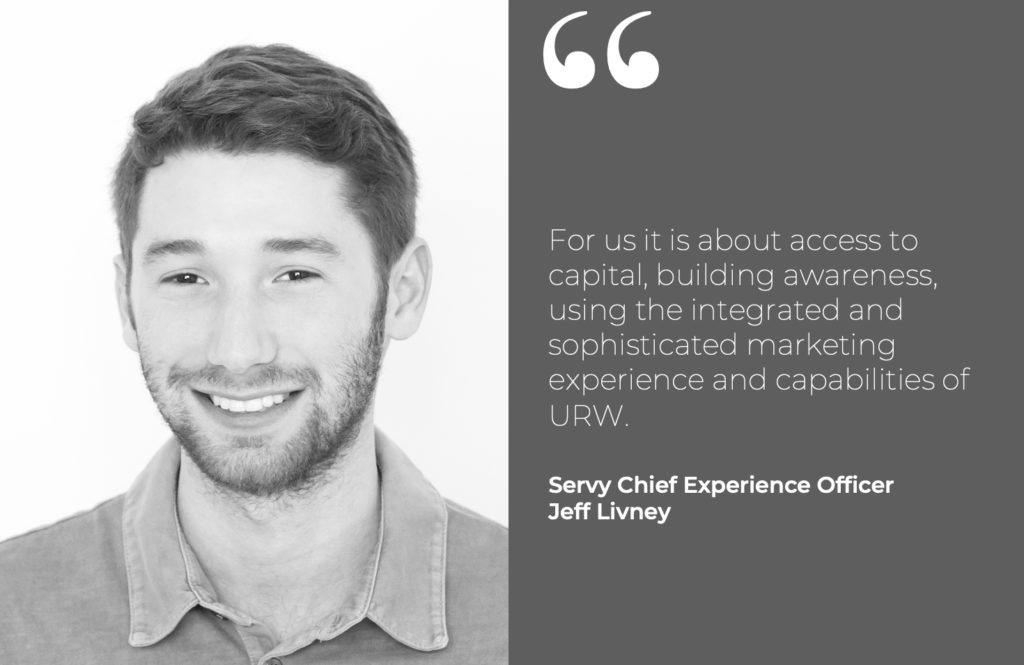
Livney said: “We started working at LAX with the Grab app and the handful of concessionaires who participated initially, but when COVID hit, URW and Los Angeles World Airports wanted to put a larger program together to help restore confidence in travel and the use of contactless technologies. We saw immediate results versus when we were doing it ourselves in a silo. We partnered with the URW team, really drove awareness, developed the marketing program, had more concessionaires come onboard and we built that connection to the in-terminal experience which we lacked the ability to do before.”
The results are striking. Despite a -65% fall in passenger traffic at LAX, the first nine months of the LAX Order Now program (compared to the previous legacy mobile ordering platform in the period from Q2 to Q4 2019) delivered a +146% surge in gross sales, with order per 10,000 passengers rocketing by +302%. Average transaction value climbed by +73%, with stores on the platform increasing by +105% as more partners came onboard.
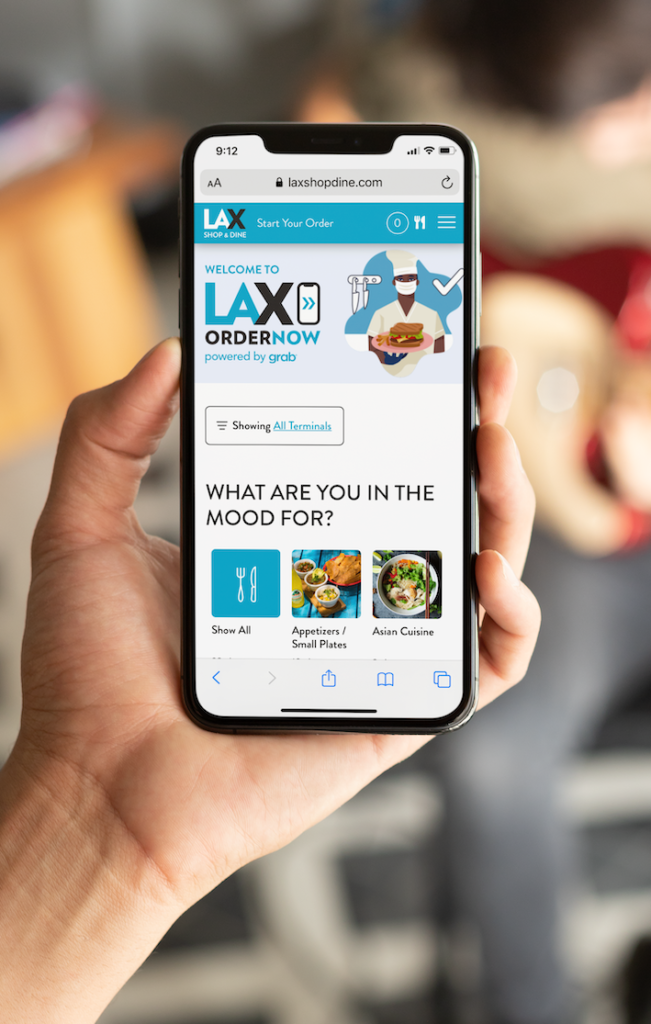
The LAX Order Now programme offered compelling results and insights into consumer thinking post-pandemic. See also video below.
The two companies also extended their partnership to URW locations Miami and Chicago T5, prompting each of them to consider the wider opportunity of using their respective networks for expansion.
“The world isn’t just going to be about the four walls of a particular concessionaire’s store again. It’s got to be about engaging customers differently, and using the real estate differently. This sort of digital infrastructure is going to enable us to do that.” – Mike Salzman
Livney said: “We started having conversations about how we could use our and URW’s networks, taking best practice from these programs. For us it is also about access to capital, building awareness, using all the integrated and sophisticated marketing experience and capabilities of URW.
“We’re growing our engineering team with more software developers, creating new products and new features. Also we have been growing our customer side, the team that interacts with the concessionaires. And we are also making more of an investment in data insights and business intelligence.
“We have this vast sub-set of data for digital ordering at airports at this point. It took us five years to get to five million transactions, and we’ll hit ten million in coming weeks. So as we grow, we are able to do more for our partners. Why should each airport build their own marketing campaigns when we can make this a service? So we will invest in that marketing capability too and resource up to support our program partners across the network.”
Servy has also been forming other partnerships that it can weave into a strengthened network. “We expanded into other types of venues, doing digital ordering for the Australian Open earlier this year for example,” said Livney. “We will similar types of venues that could use this consolidated marketplace product, from airports to stadiums to shopping centres.”
For URW, Salzman said, COVID-19 accelerated the need for digitalization of services, and for a consistent touchless ordering system to address consumer demand.
“The digital conversation in one that most airport CEOs and directors are interested in having. But it’s a question of how your managed approach to digital helps the physical in-terminal experience. The ability to do this in a very cohesive way, with the marketing engine behind it, not only improves the physical experience, but it improves the digital results too.” – Jeff Livney
“The immediate impetus was to help the airport rebuild traffic and create a safe environment for passengers,” Salzman said. “We saw a clear acceleration of demand for Servy’s offer during the pandemic and the crisis did accelerate outcomes that were already on the way. Many of us looked at the landscape and said, this is the opportunity to do things that we’ve been talking about as an industry for quite some time. It’s not just us, but many companies have been looking at innovation in digital and mobile, fulfilment and collection of food & beverage and duty free for years, right? This was just the accelerant.
“The world isn’t just going to be about the four walls of a particular concessionaire’s store again. It’s got to be about engaging customers differently, and using the real estate differently. This sort of digital infrastructure is going to enable us to do that.
“Longer term we saw an opportunity to work more closely with Servy and to help them do two things that also create value for us. The first was to do things at scale. They have a presence in many airports on a tenant by tenant basis.
“What we could do as developer of a large proportion of the program at LAX was to create a managed solution which Servy as a digital provider isn’t necessarily equipped to do. We have boots on the ground, a marketing engine, relationships with the concessionaires, all of which helps builds scale. It also helps speed. From putting the proposal [for LAX Order Now] to LAWA to implementation was three months, which is very fast in airport time.
“Then beyond that we were also attracted to Servy’s network. We can play a role in bolstering that, helping them to plug into other airports to make the experience seamless for the passenger. They can know that as they travel from airport to airport, there’s a common language and common platform, but it’s also one that applies to all the key stakeholders.
In a pilot program in partnership with Unibail-Rodamco-Westfield and AtYourGate, the LAX Order Now delivery service began using help from a two-wheeled, semi-autonomous robot helper called NomNom from September at LAX.
“I would add that, as we were looking at providers of this service and technology, we were also very attracted to the flexibility of Servy’s technology stack, to their ability to connect with the stakeholders, and to listen very carefully to how the different stakeholders – the concessionaires, the airports and the airlines – thought about this ecosystem. We have had a very strong orientation toward digital over a long period of time, working towards a system that would deliver ordering and fulfilment in food & beverage but also retail.
“We aim to create an ecosystem that’s less focused on contracts and concession agreements, and more on the customer experience and fulfilment of goods and services. That’s really our core thesis on the business and Servy fits perfectly into that. As Jeff said, we saw the success at LAX and thought there is a big opportunity here across different airports. So we decided to make the investment, which is in line with our strategy.”
That strategy fits both airports and the vast shopping centre business that URW operates. “We are moving towards a very customer-centric and fulfilment-driven business,” said Salzman.
“The revenue streams may look a little bit different than in the past both for ourselves and for our tenants. There is this convergence of physical and digital that I think we’re actually quite well positioned to achieve. Also, what it really helps enable us to do is to leverage our relationships with global tenants, local tenants, shopping centres and the airports. We are thinking about how we create infrastructure for them that creates this physical-digital environment that enables them to succeed, and that enables the customer experience of the future.
“And then you have what Servy is doing in terms of connecting in with the airlines, a hugely important participant. Our view as a company is you meet the customer where they are, not where you want them to be. And again, that relates to service, the technology stack and the flexibility of this solution. It’s not about giving someone a new app. It’s about plugging into the existing environments that they are interacting with today.”
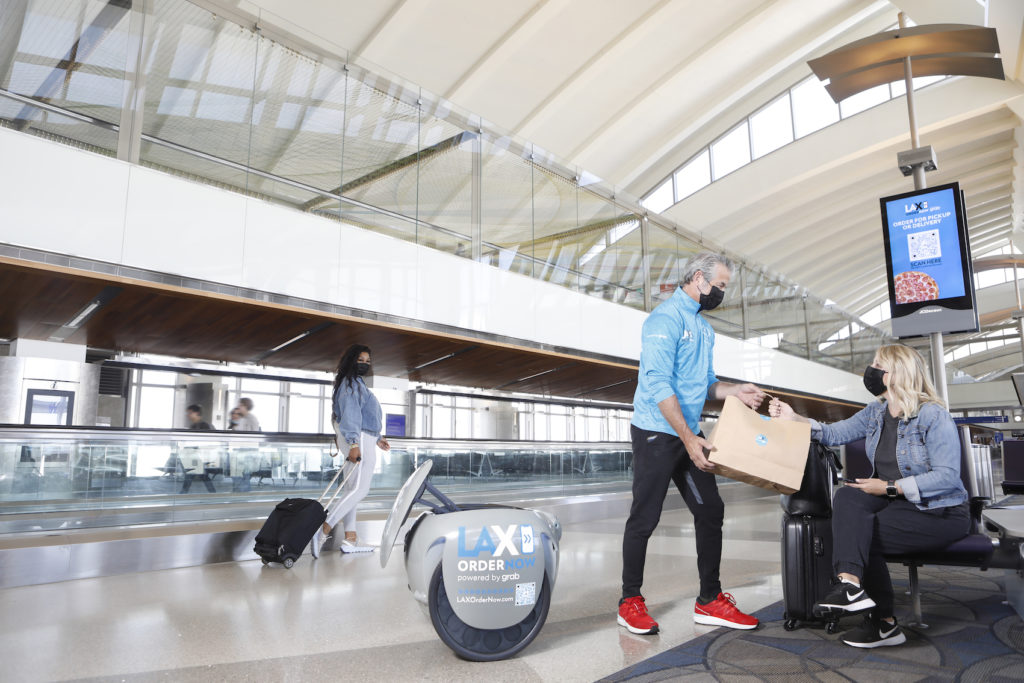
With the NomNom robot delivery scheme, the partners aim to take penetration to new levels
Servy has consistently spoken about its aim to be a player in the wider travel eco-system, a creator of the marketplace, way beyond being the app for mobile ordering. This new partnership can help achieve that goal, says Livney.
“Until now our airport programs have grown as separate entities, in line with how the real estate has developed. But take a step back and say, if this was really a consumer-facing eco-system, and I know someone ordered at LAX and they’re on their way to Dallas or Dubai, why am I not then leveraging that from an insights perspective, curating the experience, driving a bespoke offering? We can do so much more based on what we know they purchased in other places, and gain the network benefit of 80-plus airports.
“We can start to grow the CRM aspect and really help each individual airport leverage the benefits of being on the same platform. This can be a rising tide that floats all boats. We really should be able to reach the guests wherever they are, understand their day of travel better, and drive better metrics and performance for each of our individual airport programs.”
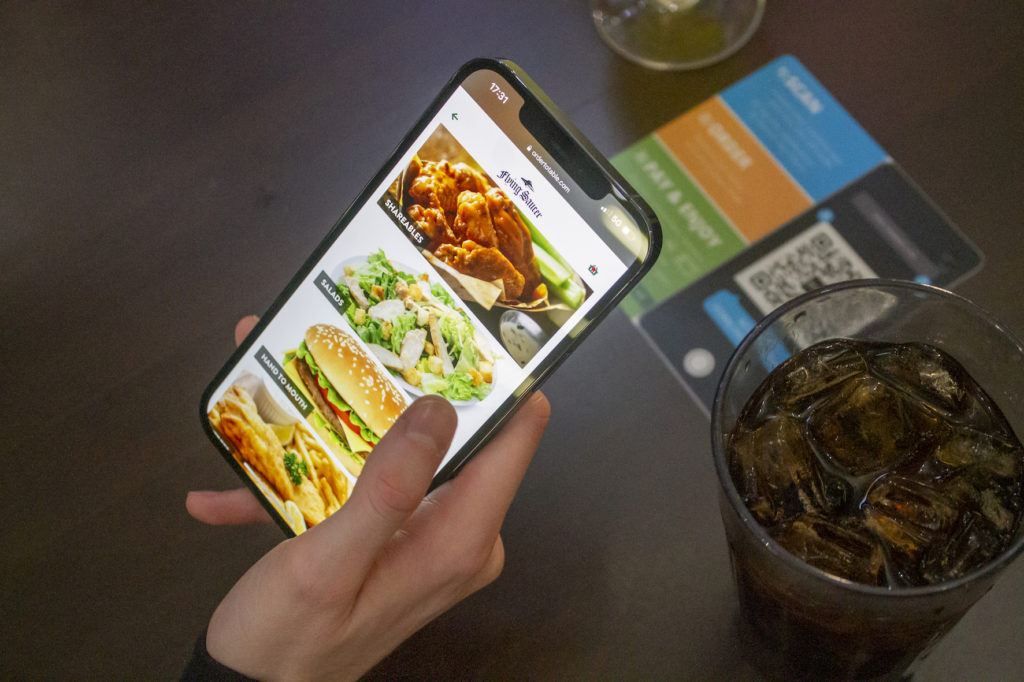
“We can start to grow the CRM aspect and really help each individual airport leverage the benefits of being on the same platform,” says Jeff Livney
Salzman added: “If you look at the insights generated by this eco-system you start to understand what is really generating revenue right down to menu level. So as we design programs and the use of our assets we can shape and change things in real time, based on what resonates with the customer.
“Then think about it from a real estate perspective. This digital backbone starts to open up and unlock real estate in an airport that perhaps wasn’t usable before. We talk about ghost kitchens and virtual brands, which is a phenomenon that’s exploding street-side. We are doing it in some of our shopping centres. And you look at an airport where you’re in a very constrained real estate environment, so how do you activate the back of house space to deliver and provide new experiences. This is one way to do it. And so again, it fits perfectly with our thesis of saying it’s not necessarily about the real estate as it exists today, it’s about creating an experience that the customer wants, and the real estate changing to meet that demand.”
For URW, the insights that a Servy partnership can deliver also offer an advantage when it comes to bidding for master retail concessions at airports in the future.
“It is resonating quite strongly,” said Salzman. “The digital conversation in one that most airport CEOs and directors are interested in having. But it’s a question of how your managed approach to digital helps the physical in-terminal experience. The ability to do this in a very cohesive way, with the marketing engine behind it, not only improves the physical experience, but it improves the digital results too.”
URW’s focus for its concession management ambitions remains on the largest airports, as it seeks to build on its presence at New York JFK, LAX, Chicago, Miami and Orlando.
Salzman said: “The first step is to roll out the program across our airports, then talk to other large airports together. We will continue to support Servy in their drive to create a global network. Some places may fall below the size threshold of where we would be a developer but we are not parochial in seeking advantage for URW or asking Servy not to work with other airports or even other colleagues on the developer side.”
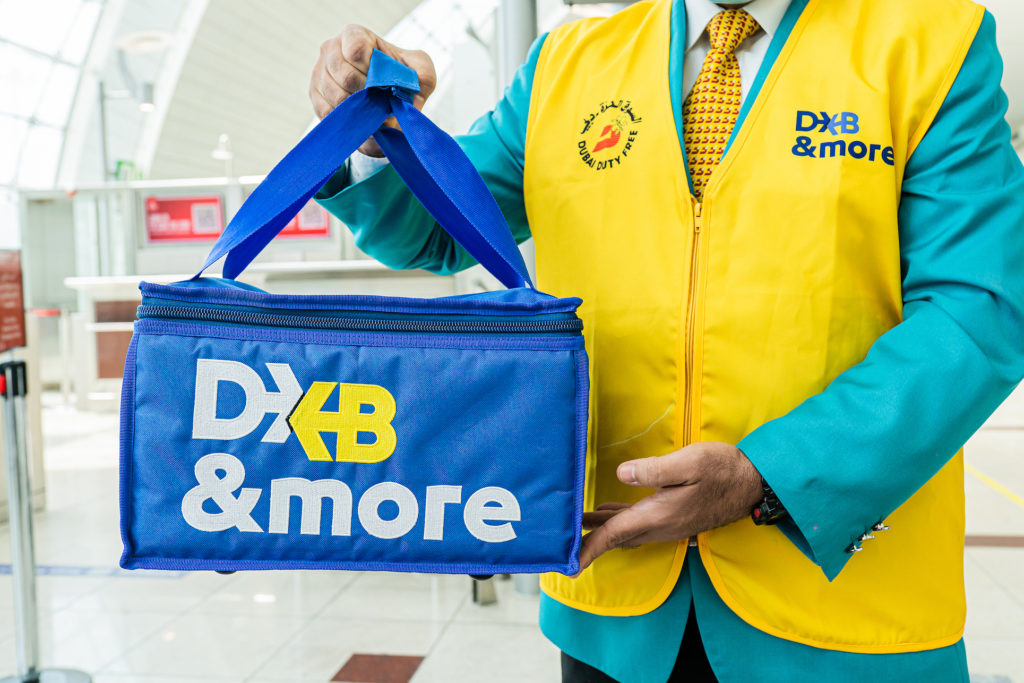
Servy had already taken its platform beyond North America, but the recent launch of DXB & More at Dubai International (in partnership with Dubai Airports and Dubai Duty Free) is a strong signal of its intentions to grow across retail and dining worldwide
For Servy, the strategy to internationalize its network beyond its North American base continues. It recently struck an agreement with Dubai Airports and Dubai Duty Free to launch DXB&more, a regional first mobile food, beverage and retail ordering service at Dubai International (DXB).
Livney said: “Dubai plants a flag in the region for us and we hope will be a model for how to run a program, just as Heathrow was in Europe. So that is a big opportunity in a growing region. We still have a lot of room to grow in the Americas. We have a large presence in the US but we are dark in Central and South America. To drive the level of engagement that makes it valuable for airlines to partner with us, we need to be present in a solid part of their network.
“Also we are developing new payment gateways to serve all customers better. That includes adding Alipay in Dubai, for example, or other platforms to service everyone’s needs.”
Having started as a mobile ordering platform for food, ordering and delivery of retail was a further step, one that Servy continues to pursue.
Livney said: “We’re still not where we need to be from a duty free perspective. The merchandise is very different, the depth of SKUs means the user experience has to evolve. It’s not like the restaurant where you’ve got 50 items to organize; in duty free you could have tens of thousands.
“We are starting that evolution. But it’s not just about retail. Collinson works across many airport services and that presents an opportunity too. We are in their lounges, there are spas and other consumer services that require ordering or other functions. There is a lot of potential and some of that will be driven by international growth, whereas food has always been the primary focus in the US.
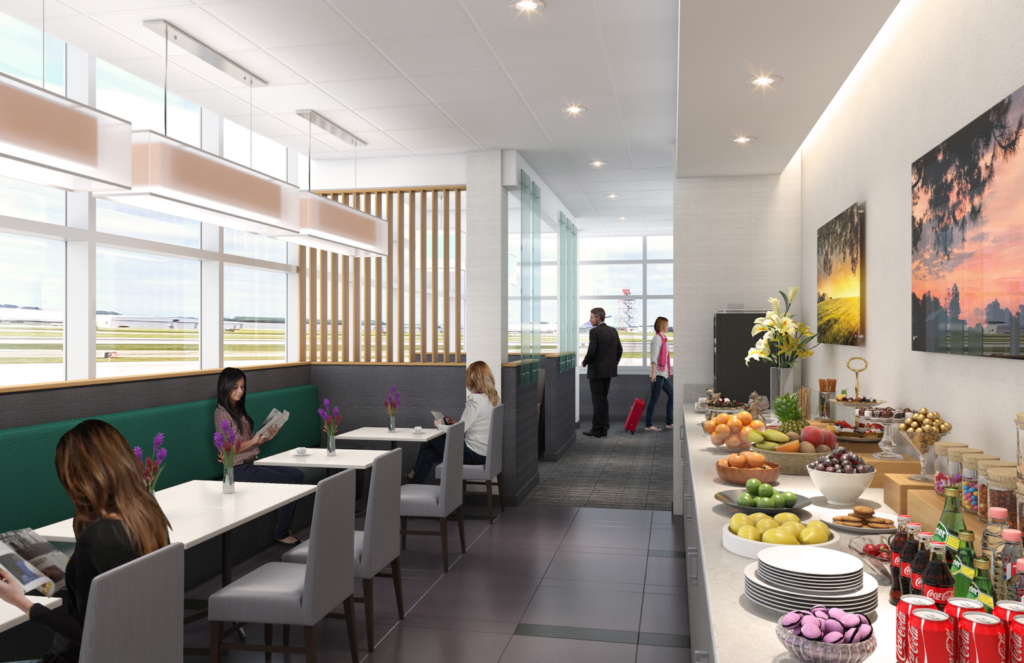
Servy’s other major shareholder Collinson also confers advantages with a wide network of lounges and other services (Cleveland Hopkins International Airport pictured)
“What we are starting to realize, too, is that there is an opportunity when someone is time-pressed; we call it the ‘double dip’. Today, they may only have time to go and get food, if they were to order in the traditional way, waiting in line to order, waiting for their food to be prepared. But now if they have ordered food using their phone, what is the opportunity to get them to shop, through an incentive in-store, for example? If they have 12 minutes before they’re going to pick up that food order at a certain outlet, and they have made a time saving, that can benefit the retail program.”
Livney added: “There’s going to be a lot of blending between the food and the retail. We’re also working on a function where you can order anything from anywhere in the same transaction. That compared to the traditional model of our platform, and pretty much every other platform out there, where I look at one brand, place an order, then look at a different brand and place a different order. There’s no reason that I cannot order food, retail and duty free and make a spa booking at the same time, and drive a consolidated experience. There is a lot of potential there by bridging all of this into one platform.
“Equally you can offer so much more by blending the physical and the digital. You have limited physical space to offer things in the terminal, but there’s no reason that we can’t offer something that’s either sent to your home or available on the other end of your journey, because both airports are part of the same platform. Then you bring the airlines into this and you really create a strong network effect, tailored for the customer.
“As an industry, we have a lot of data on all these transactions but we are not doing a whole lot today to leverage insights from them. That’s really where the evolution is going to be.”

The insights offered by partnership across a network of travel providers and locations are vital to how URW sees the progression of the industry too.
Salzman said: “The insights both at an asset level and even a store level are really, really powerful. It is a kind of understanding that we never had before about what the customer wants. So you start with this data set, you look at flow tracking of people, at software and beacons, and you start to create an understanding of how a customer moves through the airport. And number two, you know where they dwell, how much they spend, and all of those insights can be leveraged to create a far better experience in the future.
“As an industry we have done a great job at designing places. With data and insights we can ask what sorts of design features work better than others and also drive real insight at a transaction level too.”
Summing up the business case for investing in Servy, Salzman said: “We have clear ambitions to ensure Servy is tightly integrated into our offering at our existing assets and beyond that in our future bids. As I said, that physical-digital integration is already resonating strongly with airports.
“Then we have the opportunity to leverage our shopping centre platform, and to create a similar ecosystem on that side of the business. We are just scratching the surface there, but it’s a huge opportunity.”
View this article as featured in The Moodie Davitt Report here.
